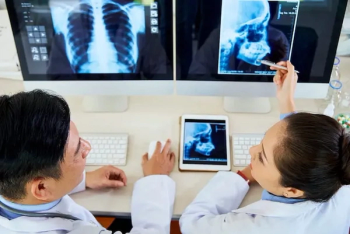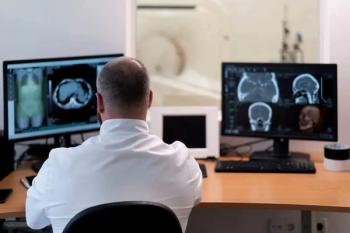
No, Scanning Isn't Just Pushing a Button
Better communication with patients will result in better scans.
A friend of mine recently got diagnosed with a malignancy. About the most favorable prognosis possible, but still requiring some surgery and a CT to establish a staging-baseline. Of course, my metaphorical door was wide open for any and every question/concern that came to mind along the way.
As I’ve mentioned in one or two previous columns, when folks ask me for my input in matters medical, I (unsurprisingly) am at my best pertaining to the imaging-aspects of their situations. The further afield from radiology you get with me, the more you’re depending on what I’ve heard from other docs, or vaguely remember from internship, even med school. In which case I try very hard to discredit myself as a source of helpful info.
Here, however, we were talking about getting a CT and what to expect, so it was “game on.” The friend had undergone an MR at some point, and discovered that enclosed spaces really were not his bag, so of course that was a primary concern which I was happy to allay.
I did feel the need to point out that, subsequent to residency and fellowship, I’ve noticed an awful lot of scans I receive from hospitals across the country are pretty darned lousy in terms of, shall we say, avoidable technical limitations. Patients needlessly positioned with arms alongside their torsos, for instance, causing obscuration from beam-hardening, or moving around during scans, breathing or otherwise.
Yes, there are all sorts of reasons why these issues are sometimes unavoidable. An injured extremity preventing other positioning, for instance, or an inebriated, demented, etc. patient unable to comply with instruction. But seems to me that way too many of the dozens of scans I see every day are suffering these limitations. And I’ve gotten the impression that maybe the techs at some of these facilities just aren’t bothering to instruct the patients properly.
Granted, years have passed since I was working in one of these hospitals. Maybe the scanners have gotten so good and so fast that motion is no longer considered a problem. Or at least, maybe the vendors are telling the techs and rads onsite that it’s a non-issue.
Regardless: I advised this friend, about to undergo a scan in which lymph nodes and other small structures were about to be measured for the purpose of follow-up study that millimeters matter. Be sure you hold still, and follow breathing instruction if it’s given. If it indeed is not…well, do your best not to breathe while the scanning is happening.
Off he went, and got his scan (with good results, I’m happy to hear). During a later discussion, he confirmed that he was never told to remain still, nor given any verbal instruction from a tech about breathing. Instead, he noted, there was a recorded voice in the scanning-suite which he could hear telling him when to breathe…but the volume, acoustics, and ambient noise-level were such that, had he not had that conversation with me, he would not have noticed it and would thus have breathed throughout the scan.
I remember, back during my fellowship, a tech who went above and beyond in terms of such instruction when doing body MR: He’d verbally walk patients through completely inspiring and expiring twice, before inspiring a third time in prep for the actual imaging. It added a little bit of time to each procedure, but-hey! The scans were good as a result.
In that same fellowship, one of the attendings had the techs summon him whenever there was a patient for body MR who was demented, inebriated, or otherwise unlikely to maintain focus long enough to remember breathing instruction for even a few seconds during scanning. The attending would go and stand next to the patient to loudly repeat instruction throughout the study: “STAY STILL HOLD YOUR BREATH DON’T MOVE DON’T BREATHE DON’T MOVE…” And, presto! What might have been a motion-garbled mess of a study, instead remained of diagnostic quality.
Perhaps I expect too much…but it does strike me that our field would be elevated if even a modicum of similar effort were more routinely exercised.
Newsletter
Stay at the forefront of radiology with the Diagnostic Imaging newsletter, delivering the latest news, clinical insights, and imaging advancements for today’s radiologists.




























